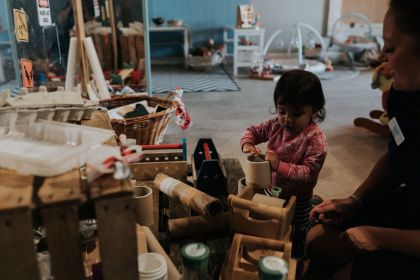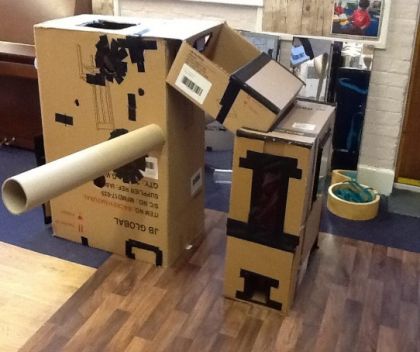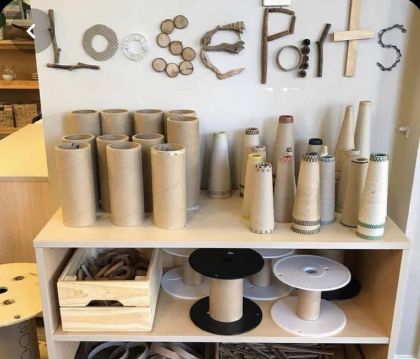
Blog
Have You Heard About the Benefits of Loose Parts Play?
Loose parts are springboards for play and are an essential element of a rich, child-centred play environment. "What is loose play? And how can we do it at home?" - I hear you say! Read on to find out...
“Any environment, the degree of creativity and inventiveness is directly proportional to the number of variables in it” – Nicholson
The pedagogical approach for loose parts is to enable children to undertake their own learning using everyday objects rather than ‘toys’. The concept originates from architect Simon Nicholson who wrote about the benefits of a loose parts environment to child development. He identifies loose parts as “all the things that satisfy ones curiosity and give us the pleasure that results from discovery and invention.” Loose parts present variables that support a particular type of experimental play; beneficial because “children learn most readily and easily in a laboratory type environment where they can experiment, enjoy and find out things for themselves.”
The possibilities of loose parts are endless and really only limited by your imagination. Once you’re in the right mind-set, everything becomes a loose part! The key thing to remember is that materials must be open ended, that is they have no pre-determined rules for use and can be made, moved, moulded, manipulated and morphed into any number of things using only imagination.
Here are some top tips for loose play from our wonderful Kindred Odstock Nursery Manager, Melissa Alford:
Top Tips for Loose Parts Play:
- Keep Loose Parts free. Avoid static play spaces as this limits the children’s options.
- Allow children to take risks and explore for themselves. Let children be involved in discussing risk and potential outcomes.
- Step back and allow children to engineer their play.
- Help children learn to problem solve by asking questions and redirecting their thoughts.
- Keep Loose Parts organised and accessible.
- Don’t be too quick to tidy up – allow children time to revisit their projects. They may take on a whole new meaning when the child revisits.

Top Five Loose Parts for Young Children:
- Fabric (and lots of it including all sizes and textures!).
- Cardboard tubes and boxes (the possibility of a cardboard box is endless – especially in a child’s imagination!).
- Balls or conkers (these are great for putting down tubes and transporting).
- Egg Cartons (great for transporting loose parts and hiding objects).
- Sensory Bottles (these can be filled with objects to explore sight and sound.
- Pots and Pans (a real favourite for all ages. Can be used for banging, transporting, hats! Again the possibilities are endless).


Looking for an AWARD-WINNING day nursery or pre-school?
Find your nearest nursery here
Source: https://media.kaboom.org/docs/documents/pdf/ip/Imagination-Playground-Theory-of-Loose-Parts-Simon-Nicholson.pdf
